Cold Cast Bronze: Three Casting Methods
There are three methods that we typically recommend for creating cold cast bronze pieces [Figure 1]: solid casting, slush casting, and bronze dusting.
If you’re working with Polytek® rubber mold materials, keep this in mind: both polyurethane rubber molds and silicone rubber molds can be used for the first two processes, while the last one requires a silicone mold.
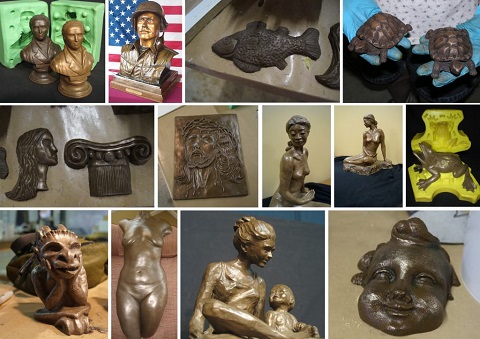
Figure 1
The same casting material (three ingredients) [Figure 2] can be used for each method; however, the amount of product and the application technique vary from method to method.
Recommended Products
- EasyFlo 60 Casting Plastic (or EasyFlo Clear Casting Plastic)
- Brown PolyColor Dye
- Bronze Powder
- Finishing tools of your choosing: #0000 steel wool, paint, products for the application of patinas, etc. For all methods, steel wool is needed to burnish the surface of these castings to expose the metal particles.

Figure 2
Solid Casting Method
Both polyurethane rubber molds and silicone rubber molds can be used for this method. If you’re working with a polyurethane rubber mold, application of a release agent (e.g., Pol-Ease® 2300 Release Agent) is necessary. A release agent is not needed for this application when working with silicone rubber molds.
This method requires enough cold cast bronze mixture (EasyFlo + Bronze Powder + Brown Dye) to fill the entire mold cavity. Solid casting is recommended for smaller castings [Figure 3] as it typically requires the most bronze powder compared to other methods.
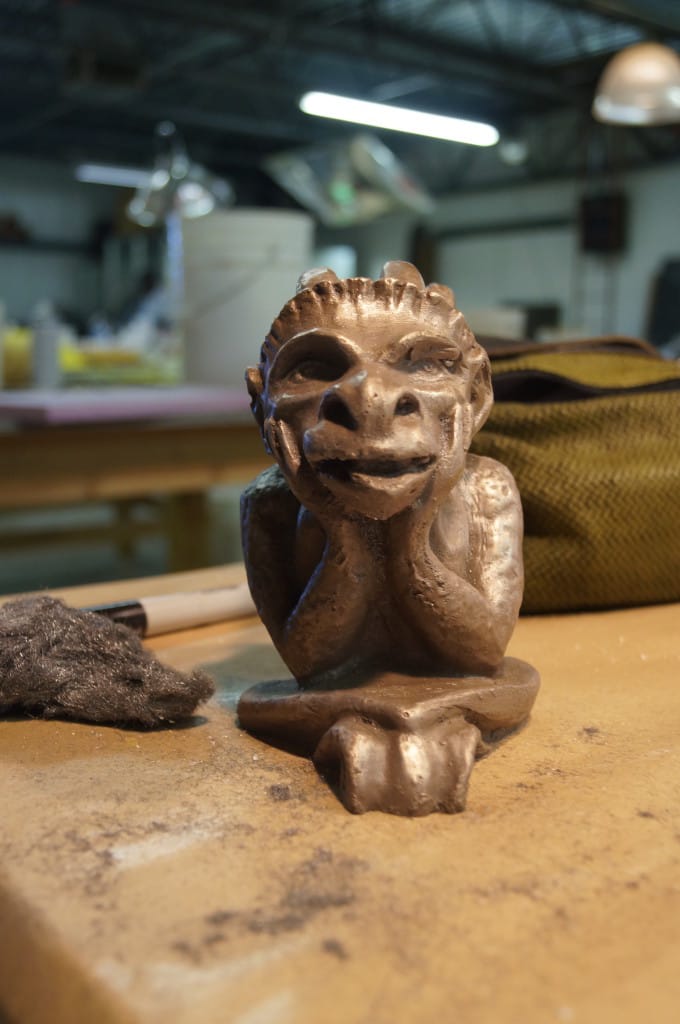
Figure 3
We recommend the following mix ratio for this method:

|
By Volume:
1 Part EasyFlo 60 Part A : 1 Part EasyFlo 60 Part B : 2 Parts Bronze
Powder [88% Bronze Powder when measuring by weight] If you’re working with EasyFlo Clear Casting Plastic: By Volume:
1 Part EasyFlo Clear Part A : 1 Part EasyFlo Clear Part B : 1 Part
Bronze Powder [71% Bronze Powder when measuring by weight] Note: EasyFlo Clear is more moisture sensitive and air bubbles can be more of an issue as compared to EasyFlo 60. |
Advantages of this Method
- It is a one-step process.
- Bronze is situated throughout the casting, so there is no concern about over-polishing the casting.
Disadvantages of this Method
- It may require more bronze powder than other methods, which can be costly.
Slush Casting Method
The slush cast method is a two-step process that can be completed in a polyurethane rubber mold (release agent is needed) or a silicone rubber mold. The two basic steps are:
-
- Create a bronze-filled, thin (1/8″ to 1/4″) surface layer.
- Back it with a less expensive resin or other casting material. A popular backing option is EasyFlo 60 with Brown PolyColor Dye.
The create the first layer, a small amount of bronze resin mix (EasyFlo + Bronze Powder + Brown Dye) is poured into the mold and “slushed” around until it thoroughly coats the surface of the mold. When necessary, a dry brush can be used to brush the resin into the details.
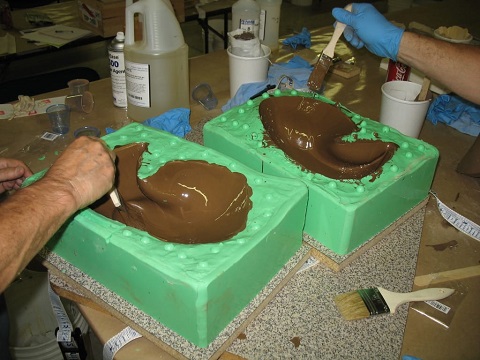
When this first layer has “gelled”, the remainder of the mold cavity is filled with bronze-less resin (e.g., EasyFlo 60 & Brown Dye), or a different casting material (e.g., PolyFoam). Casting material can be selected based on the desired weight of the final casting.
Advantages of this Method:
- Requires less bronze powder than the solid cast method.
- The overall weight of the casting can be manipulated by choosing different casting materials for backfilling.
Disadvantages of this Method:
- It is a two-step process with some wait time between steps.
- It requires manual rotation of the mold.
- There is the potential to over-polish and burn through the thin bronze layer.
Bronze Dusting Method
This method requires the use of a silicone rubber mold; polyurethane rubber molds cannot be used because they require the use of release agent that would interfere with the method of application.
There are two basic steps in this process:
- Thoroughly dust the surface of the mold with bronze powder.
- Pour EasyFlo 60 with Brown PolyColor Dye behind it.
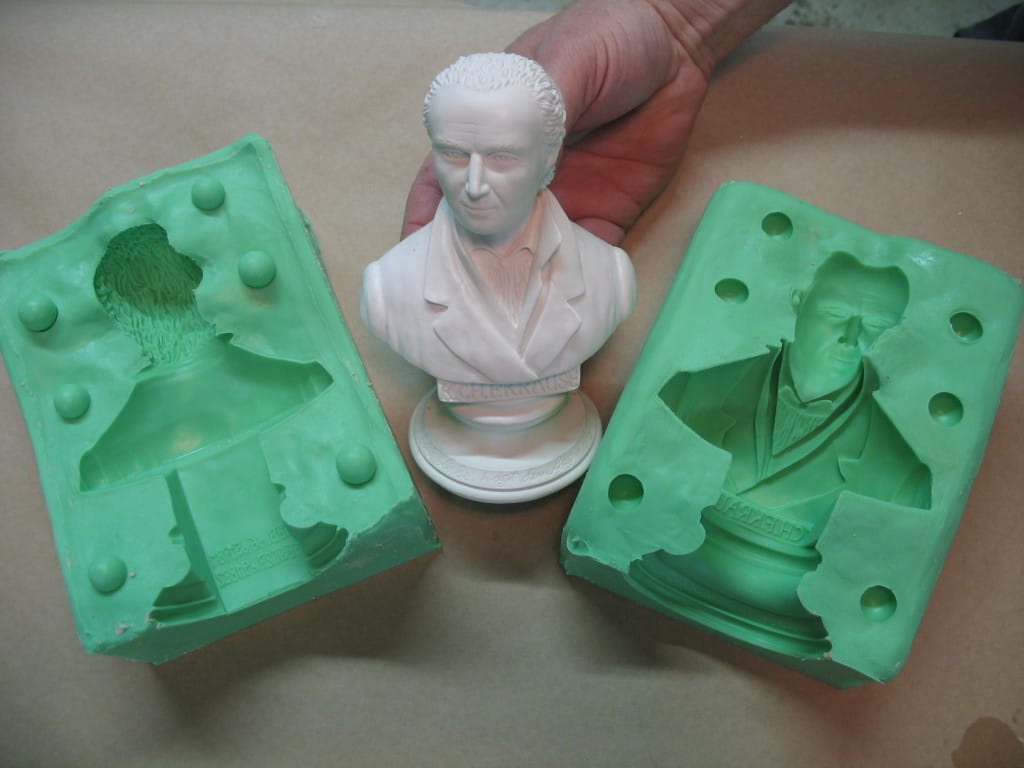
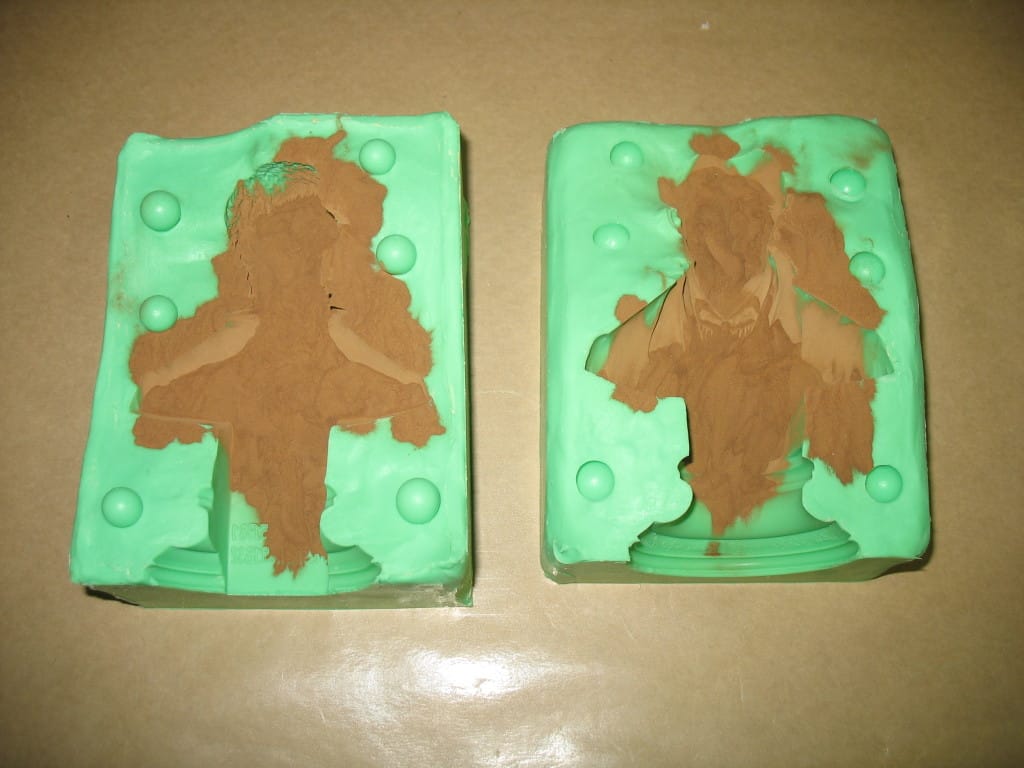
Evenly distribute the powder by tilting the mold in all directions. Avoid touching the powder as this may cause defects on the finished part:
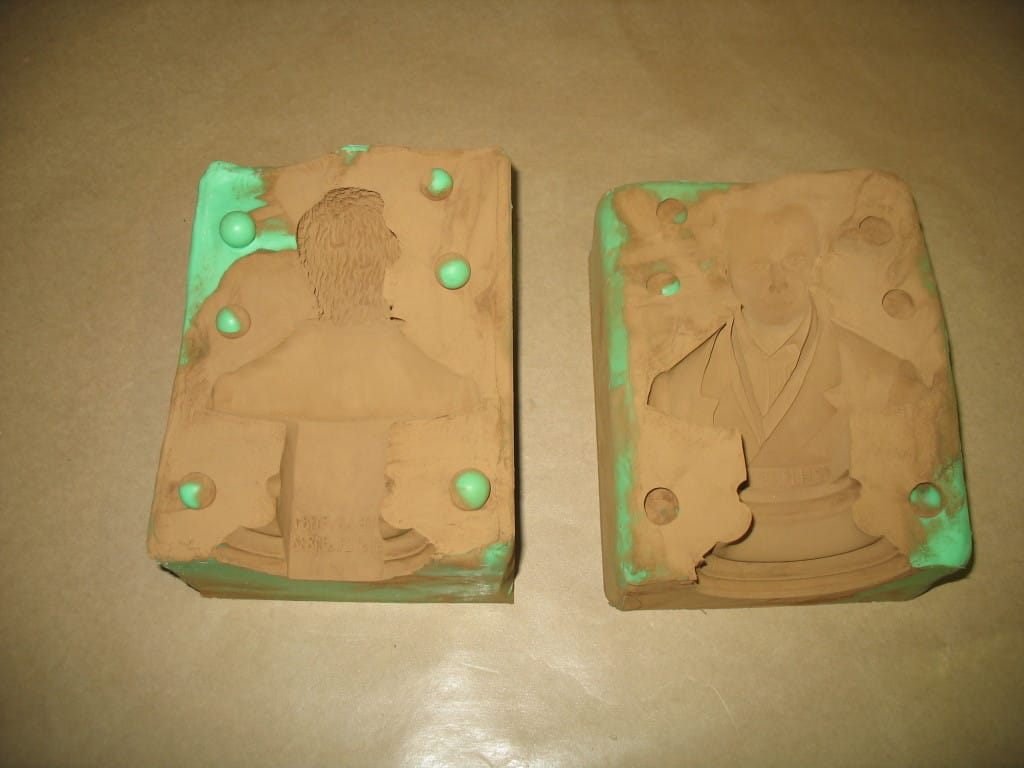
Prepare the mold for casting and fill the mold cavity with the appropriate amount of EasyFlo 60 & Brown PolyColor Dye:
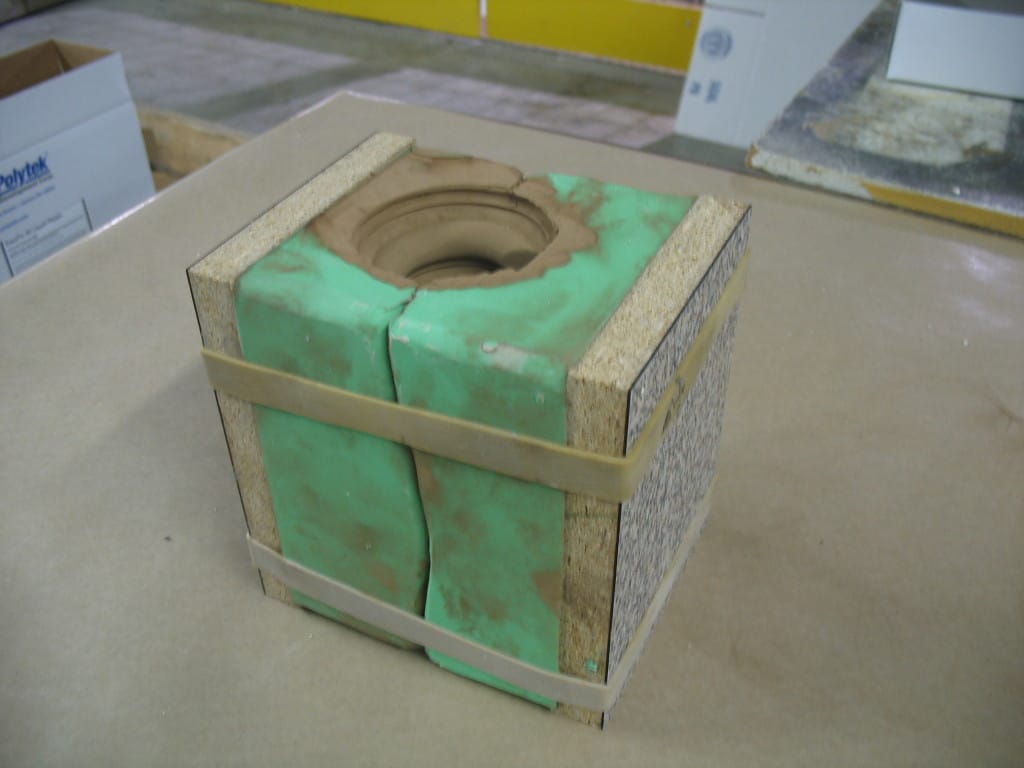
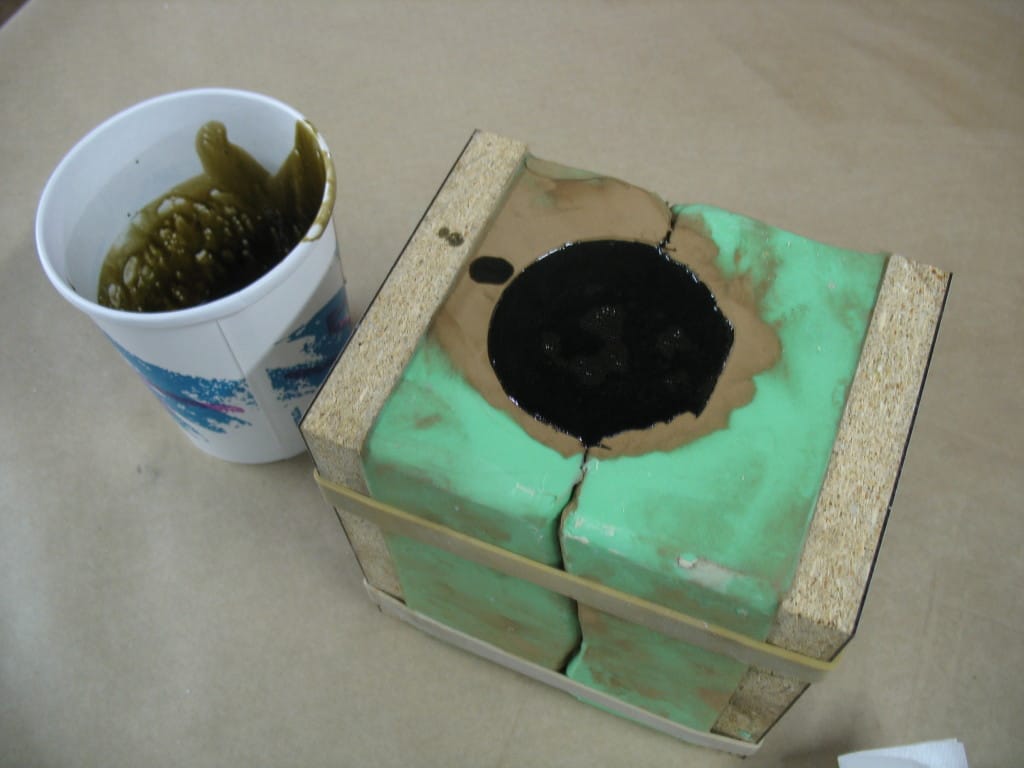
When the resin has cured (EasyFlo 60 has a demold time of 15-30 minutes), remove it from the mold:
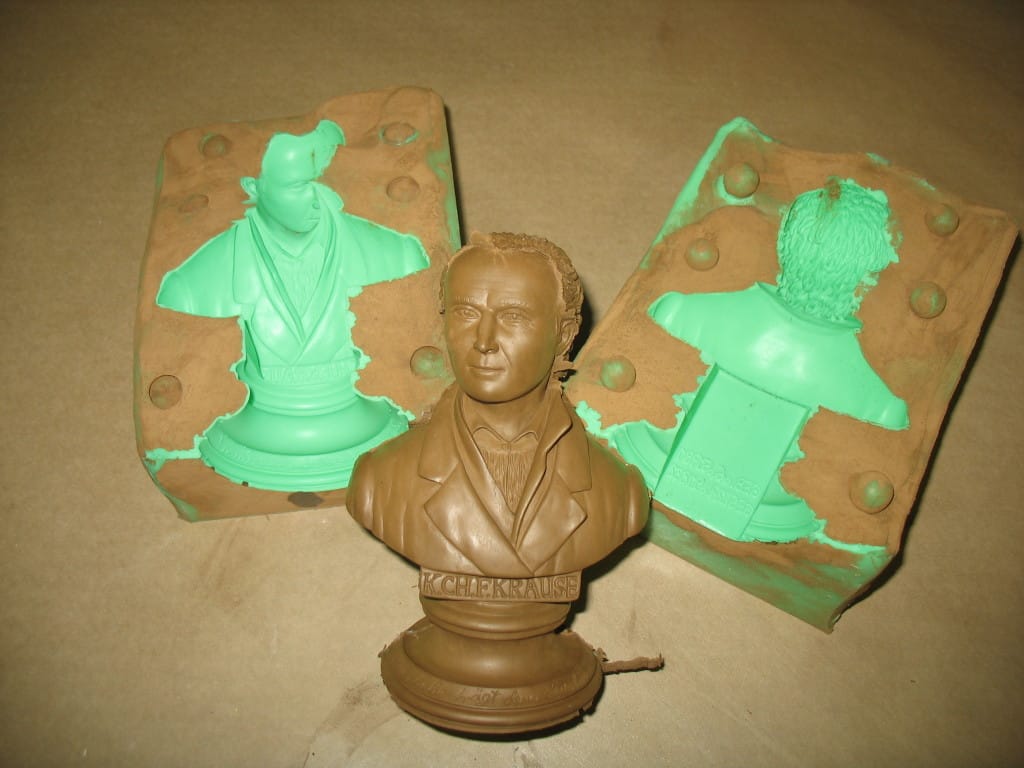
Advantages of this Method:
-
Requires less bronze powder than the solid cast method.
- The bronze powder is positioned right at the surface of the casting, so this method often requires less burnishing to expose the metal particles.
- Takes patina much better than other methods because bronze is fully exposed on the surface – there is no resin to burnish away.
Disadvantages of this Method:
- This method cannot be completed with a polyurethane rubber mold.
- Must be very careful when burnishing – it is very easy to burn through the thin bronze coating.
Faux Bronze Finish on EasyFlo 60 Plastic
Instead of utilizing bronze powder, some choose to create a faux bronze finish on their plastic castings. Click here for an example completed by a customer.